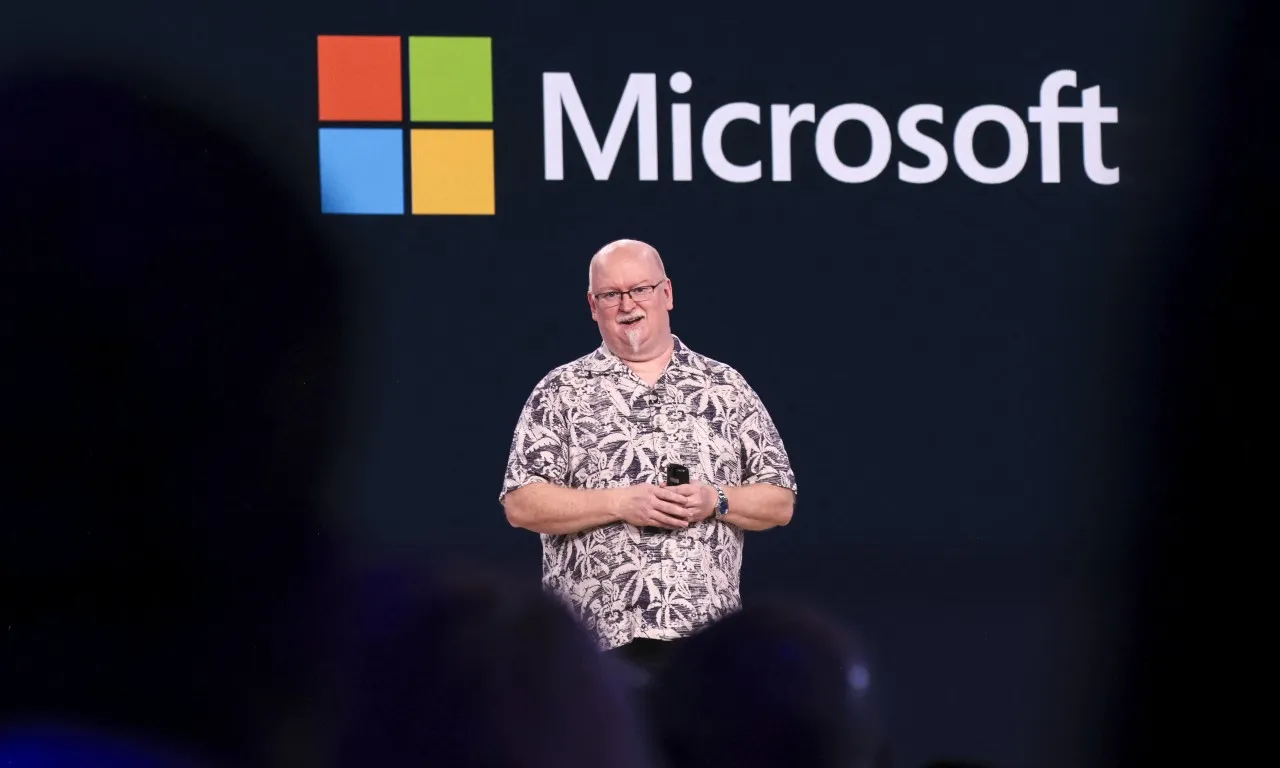It’s no secret that the world of artificial intelligence is moving at lightning speed. In a bold, strategic move that’s sending ripples through the tech industry, Microsoft has made its ambitions crystal clear: it plans to predominantly use its own Microsoft AI chips in its data centers. This isn’t just a minor shift; it’s a fundamental pivot that signals a new era for the Redmond-based giant and the entire cloud computing landscape.
For years, companies like Microsoft have relied on a handful of specialized chipmakers to power their sprawling data centers. But as the demands of AI models become exponentially more complex and power-hungry, the limitations of a one-size-fits-all approach are becoming apparent. Microsoft’s decision to double down on its own custom silicon is a direct response to this challenge, a calculated bet on efficiency, performance, and, ultimately, market dominance.
But what does this really mean for you? If you’re a developer, a business owner relying on Azure, or simply an AI enthusiast, this transition is a huge deal. It promises to unlock new capabilities, potentially lower costs, and accelerate the pace of innovation. In this deep dive, we’ll unpack the essential reasons behind this strategic shift and explore what the future powered by Microsoft AI chips looks like.
Contents
- 1 The Dawn of a New Silicon Era for Microsoft
- 1.1 1. The Insatiable Demand for AI Performance
- 1.2 2. The Economic Equation: Driving Down Costs
- 1.3 3. The Customization Advantage: Tailor-Made for Azure
- 1.4 4. Reducing Dependency and Supply Chain Risk
- 1.5 5. The Competitive Landscape: Keeping Pace with Rivals
- 1.6 6. Power Efficiency and Sustainability Goals
- 1.7 7. A Future-Proof Strategy for an AI-First World
- 1.8 Share this:
- 1.9 Related posts:
The Dawn of a New Silicon Era for Microsoft
The move towards in-house chip design isn’t an overnight decision. It’s the culmination of years of research, development, and a clear vision for the future of AI infrastructure. According to a recent report from CNBC, Microsoft is gearing up to have its custom silicon, particularly the Maia AI accelerator and the Cobalt CPU, power the majority of its data center operations.
This signals a significant departure from its heavy reliance on third-party vendors, most notably Nvidia, whose GPUs have long been the gold standard for training and running large AI models. While Microsoft has clarified that it will continue its partnership with Nvidia and other suppliers, the message is unmistakable: the future of Microsoft’s cloud is built on Microsoft’s own foundation.
This strategy is all about control. By designing chips specifically tailored to its software and services, like the Azure cloud platform and its suite of AI tools, Microsoft can achieve a level of optimization that’s simply not possible with off-the-shelf hardware. Think of it like a master chef sourcing ingredients directly from their own garden versus buying them from a general store. The quality, integration, and final result are just on another level.
1. The Insatiable Demand for AI Performance
At the heart of this strategic pivot is the sheer, unadulterated demand for more powerful and efficient computing. Modern AI models, especially the large language models (LLMs) that power services like ChatGPT (which runs on Microsoft’s Azure), are incredibly resource-intensive. Training these models requires an astronomical amount of processing power, and running them at scale for millions of users demands unparalleled efficiency.
The current generation of hardware, while powerful, wasn’t purpose-built for the unique workloads that these massive AI systems present. Microsoft realized that to stay ahead of the curve and continue pushing the boundaries of what’s possible with AI, it needed a new approach.
By developing its own Microsoft AI chips, the company can fine-tune every aspect of the hardware to match the specific needs of its software. This synergy between hardware and software allows for faster processing, lower latency, and the ability to handle more complex AI tasks than ever before. It’s about creating a perfectly balanced ecosystem where every component is working in harmony to deliver peak performance.
2. The Economic Equation: Driving Down Costs
Let’s talk about the elephant in the room: cost. The chips that power the AI revolution are incredibly expensive. Relying on a single dominant supplier creates a bottleneck and drives prices sky-high. By bringing chip design in-house, Microsoft is making a long-term play to control its own destiny and, more importantly, its own budget.
Building a custom chip is a massive upfront investment, no doubt. But over the long run, the savings can be astronomical. Microsoft can manufacture these chips at cost, avoiding the hefty profit margins charged by third-party vendors. These savings can then be passed on to customers in the form of more competitive pricing for Azure services, or they can be reinvested into further research and development.
This is a classic vertical integration strategy, and we’ve seen it play out successfully with other tech giants like Apple and Google. By controlling the entire stack, from the silicon to the software, Microsoft can optimize its supply chain, reduce its dependency on external partners, and build a more resilient and cost-effective infrastructure. It’s a savvy business move that protects its bottom line while fueling future growth.
Read Also: AI Mode: 3 Exclusive Tips for Shopping Smarter, Not Harder
3. The Customization Advantage: Tailor-Made for Azure
One of the most compelling reasons for this shift is the power of customization. General-purpose chips are designed to be good at a lot of things, but they’re rarely perfect for one specific thing. Microsoft AI chips, on the other hand, are being designed with one primary goal in mind: to be the absolute best at running Microsoft’s AI workloads on the Azure cloud.
This means the chip architecture can be optimized for the specific algorithms and software frameworks that Microsoft uses. The Maia 100 AI accelerator, for instance, is engineered to excel at the types of calculations required for training and inference in large language models. Similarly, the Cobalt 100 CPU, which is based on the Arm architecture, is designed for general-purpose cloud services, offering incredible efficiency and performance-per-watt.
This tailor-made approach leads to significant gains. Imagine trying to run a marathon in shoes designed for basketball. You could do it, but it wouldn’t be very efficient, and your performance would suffer. Now, imagine running that same marathon in custom-fitted running shoes designed specifically for your feet. The difference would be night and day. That’s the kind of advantage Microsoft is chasing with its custom silicon.
4. Reducing Dependency and Supply Chain Risk
The past few years have taught us all some hard lessons about the fragility of global supply chains. A single disruption can have a cascading effect, leading to shortages, delays, and soaring prices. By relying heavily on a small number of external suppliers for its most critical components, Microsoft was exposing itself to significant risk.
Developing its own Microsoft AI chips is a powerful way to mitigate that risk. While the company will still rely on manufacturing partners like TSMC to physically produce the chips, having control over the design gives it much more flexibility and leverage. It can diversify its manufacturing partners and build a more robust and resilient supply chain that isn’t dependent on the whims of a single vendor.
This move is about building a more self-reliant future. It ensures that Microsoft’s ability to innovate and expand its AI services isn’t held hostage by external factors. In a world where AI is becoming increasingly critical to every aspect of business and society, this kind of supply chain security is not just a nice-to-have; it’s an absolute necessity.
5. The Competitive Landscape: Keeping Pace with Rivals
Microsoft is not operating in a vacuum. Its biggest competitors in the cloud computing space, namely Amazon Web Services (AWS) and Google Cloud, have been designing their own custom chips for years. AWS has its Graviton (CPU) and Trainium/Inferentia (AI) chips, while Google has its Tensor Processing Units (TPUs).
For Microsoft to remain competitive, standing still was not an option. It had to make a move to match the in-house capabilities of its rivals. This isn’t just about playing catch-up; it’s about leapfrogging the competition by creating a more tightly integrated and optimized platform.
The race to dominate the AI cloud is on, and the battleground is increasingly being fought at the silicon level. The company that can provide the best performance at the lowest cost will have a significant edge. By investing heavily in its own Microsoft AI chips, the company is ensuring it has the arsenal it needs to compete and win in this high-stakes game. This commitment to custom hardware signals to the market that Microsoft is all-in on AI and is willing to make the investments necessary to lead the pack. You can learn more about the broader industry trends in custom silicon from leading technology analysis firms like Gartner.
6. Power Efficiency and Sustainability Goals
Data centers are notoriously power-hungry. As the scale of AI continues to grow, so does the energy consumption and environmental footprint of the infrastructure that supports it. This is a major concern for Microsoft, which has ambitious sustainability goals, including being carbon negative by 2030.
Custom chips offer a powerful lever for improving energy efficiency. By designing hardware specifically for its workloads, Microsoft can strip out unnecessary features and optimize the chip to perform its tasks using the least amount of power possible. The choice of the Arm architecture for the Cobalt CPU is a perfect example of this, as Arm-based processors are renowned for their incredible performance-per-watt.
This focus on efficiency is a win-win. It lowers Microsoft’s operational costs by reducing its massive electricity bills, and it helps the company meet its environmental commitments. For customers, it means that running their workloads on Azure can be both more cost-effective and more sustainable. This green-computing angle is becoming an increasingly important factor for businesses choosing a cloud provider.
7. A Future-Proof Strategy for an AI-First World
Ultimately, this entire strategy is about building a foundation for the future. Microsoft sees a world where AI is not just a feature but the core of nearly every application and service. To power this AI-first world, it needs an infrastructure that is scalable, flexible, and powerful enough to handle a level of complexity we can only just begin to imagine.
Relying on off-the-shelf hardware is a strategy for the past. To lead in the future, Microsoft knows it needs to control its own technological destiny. The development of Microsoft AI chips is the cornerstone of this future-proof strategy. It gives the company the agility to adapt to new AI breakthroughs and the power to build the next generation of intelligent applications.
This is a long-term vision that will unfold over several years. But the direction is clear. Microsoft is transforming itself from a software company that runs on other people’s hardware into a true end-to-end systems company, where the hardware and software are developed in tandem to create an experience that is greater than the sum of its parts. This is what it takes to win in the age of AI, and Microsoft is placing its bet.




